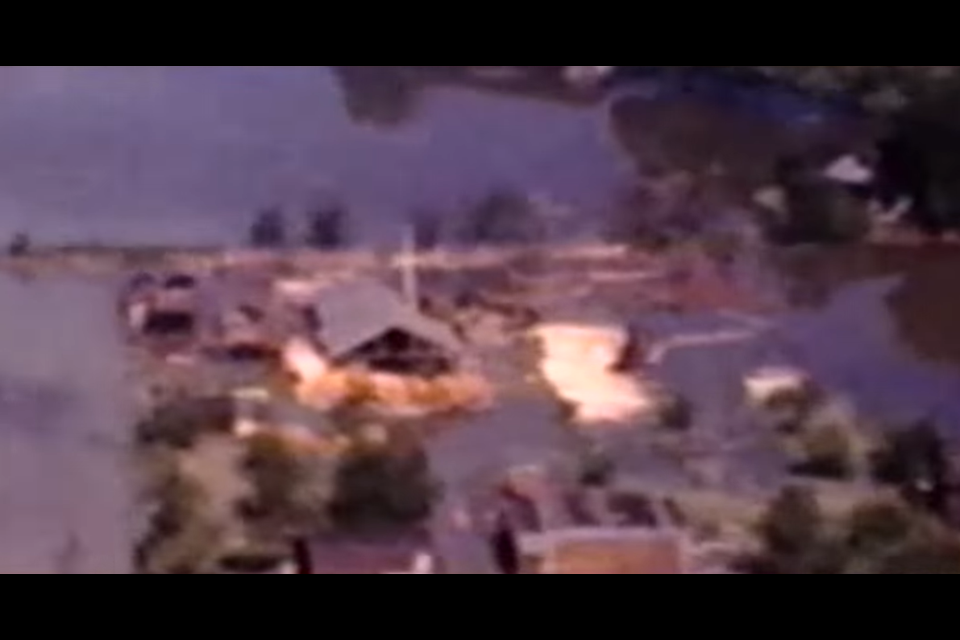Dramatic footage of flooding in the Fraser Valley is a common sight right now, but it's been captured in the past as well.
In 1948 a massive flood hit the region after the Fraser River breached its bank, forcing thousands of people out of their homes. In 1999 Doug Neetz was working for a visual design and video company when a man walked in asking about getting some footage his grandfather had shot transferred from film.
It turned out it included colour, aerial footage of the flood, something extremely uncommon for the era, so Neetz went about building a documentary around the footage, and found people from throughout the region who had lived through the historic flood.
"That's pretty cool footage so we got it transferred to beta," he tells Vancouver Is Awesome. "Since it was basically 50 years it was close enough that we felt we could produce a tribute video."
That video, with first-hand accounts of an event nearly 75 years ago, is now on YouTube for all to watch. Neetz figured there would be renewed interest in the history given the current flooding. He researched the disaster using a book about it, called Nature's Fury, which was published just after the flood, along with archival records.
"It was a very different flood situation, that was the Fraser River that breached," he explains, noting Sumas Prairie faced the same issue it does now, but with water coming from a different direction. "When it breached it was much more catastrophic."
While the source of the water was different, the geography meant it went to the same place.
"It's still the same because it's Sumas Lake trying to become Sumas Lake again," he notes.
The 1948 flood saw much deeper waters than have been recorded this year, with depths up to 34 feet recorded. In the end 200 miles of dike had to be repaired with every able-bodied man older than 14 given tasks. In all 16,000 people had to be evacuated.
While the event was extremely destructive, Neetz says there was something he noticed making the video that he wanted to pass on.
"There's an incredible amount of community that's happening (in the recovery efforts)," he says.
In the interviews people talked about how the people came together, strangers became friends and the generosity helped strengthen the community.
"One thing that was noticeable, when there's a disaster like that; people are more friendly," says Burt Lancaster, of Matsqui, in the film."They help people one another far better than they do ordinarily."
Others agreed, saying that it brought the best out of many.
Neetz also notes that he thinks it's important people struggling now understand that others have gone through similar events and come through ok in the end, and while the disaster isn't something anyone wants to repeat (though there have been several floods in the area over the years), there can be a silver lining.
"It's definitely a recurring type of thing and I think the stories of people coming out of it and making it a positive is the main thing," Neetz says.




